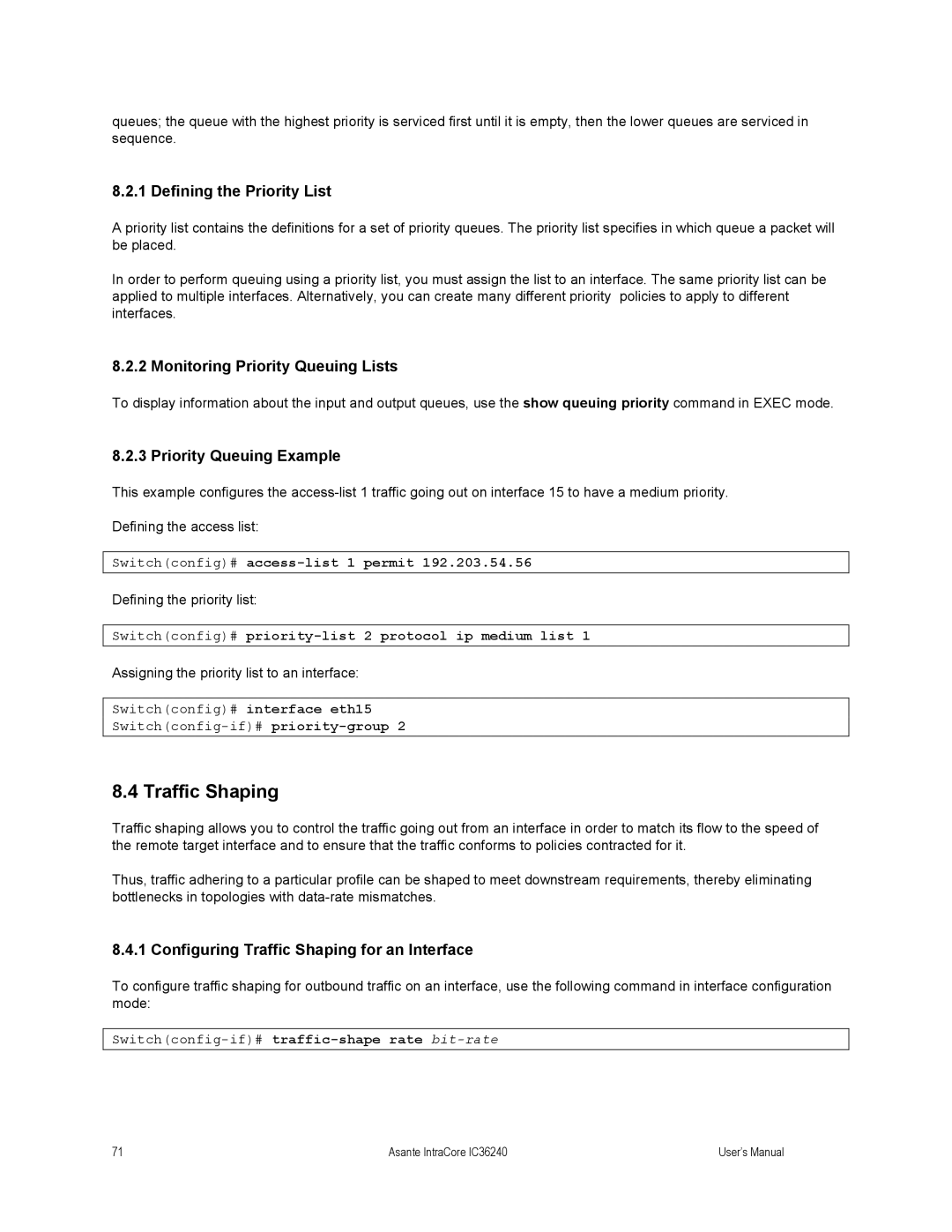
queues; the queue with the highest priority is serviced first until it is empty, then the lower queues are serviced in sequence.
8.2.1 Defining the Priority List
A priority list contains the definitions for a set of priority queues. The priority list specifies in which queue a packet will be placed.
In order to perform queuing using a priority list, you must assign the list to an interface. The same priority list can be applied to multiple interfaces. Alternatively, you can create many different priority policies to apply to different interfaces.
8.2.2 Monitoring Priority Queuing Lists
To display information about the input and output queues, use the show queuing priority command in EXEC mode.
8.2.3 Priority Queuing Example
This example configures the
Defining the access list:
Switch(config)#
Defining the priority list:
Switch(config)# priority-list 2 protocol ip medium list 1
Assigning the priority list to an interface:
Switch(config)# interface eth15
8.4 Traffic Shaping
Traffic shaping allows you to control the traffic going out from an interface in order to match its flow to the speed of the remote target interface and to ensure that the traffic conforms to policies contracted for it.
Thus, traffic adhering to a particular profile can be shaped to meet downstream requirements, thereby eliminating bottlenecks in topologies with
8.4.1 Configuring Traffic Shaping for an Interface
To configure traffic shaping for outbound traffic on an interface, use the following command in interface configuration mode:
71 | Asante IntraCore IC36240 | User’s Manual |
